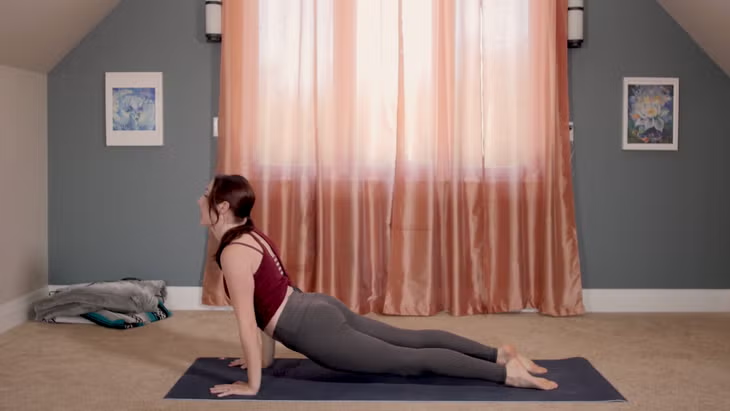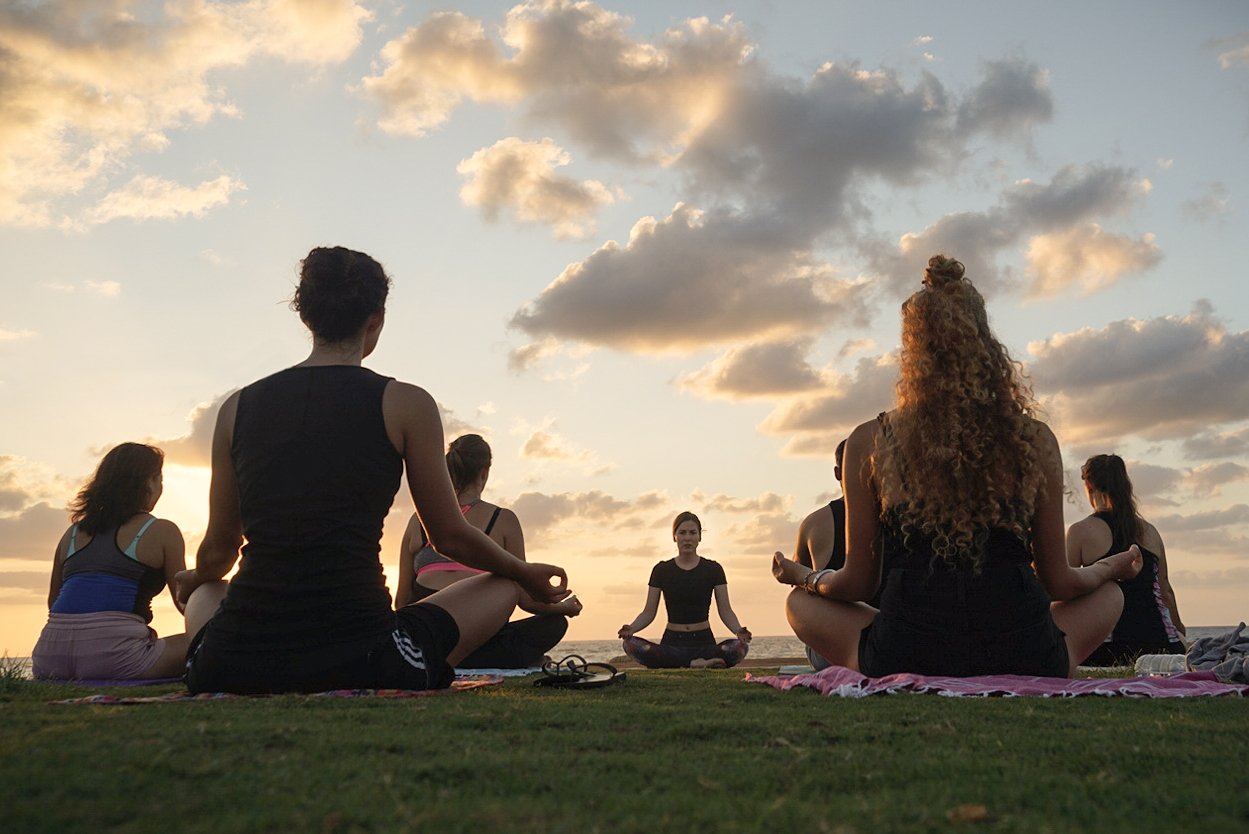Why Morning Power Yoga?
Waking up to a 20-minute power yoga session can transform your day. It’s like hitting the reset button on your body and mind, giving you energy, focus, and a sense of calm strength. This quick yet powerful practice blends dynamic movement, breathwork, and mindfulness to kickstart your morning with intention.
What Is Power Yoga?
Power yoga is a vigorous, fitness-based style of yoga rooted in Ashtanga but with more flexibility in sequencing. It emphasizes strength, flexibility, and flow, making it perfect for those who want a workout that feels both energizing and grounding. Unlike traditional yoga, it’s fast-paced and often incorporates cardio elements.
Benefits of a 20-Minute Morning Routine
A short power yoga session in the morning can set a positive tone for your day. It boosts metabolism, improves posture, and reduces stress by lowering cortisol levels. Plus, it’s a fantastic way to wake up your muscles and mind without needing hours of practice.
My Journey with Morning Power Yoga
A few years ago, I was the queen of hitting snooze. Mornings felt like a race against time, leaving me frazzled before my coffee even brewed. Then, a friend dragged me to a power yoga class, and I was hooked. The 20-minute routine I now swear by has turned my mornings into a sacred ritual. It’s not just exercise—it’s a moment to connect with myself before the world demands my attention.
How It Changed My Day
Starting with power yoga gave me clarity and energy I didn’t know I could have at 6 a.m. I noticed better focus at work, fewer aches from sitting at a desk, and a surprising ability to handle stress with a smirk instead of a scowl. It’s like my body and mind signed a peace treaty every morning.
Why 20 Minutes Is the Sweet Spot
You don’t need an hour to reap yoga’s benefits. A 20-minute session is long enough to get your heart rate up, stretch key muscle groups, and center your mind, but short enough to fit into even the busiest mornings. It’s the Goldilocks of workouts—just right.
Science-Backed Benefits
Studies show that 20 minutes of moderate exercise can boost endorphins, improve mood, and enhance cognitive function. Power yoga, with its blend of strength and mindfulness, checks all these boxes while also improving flexibility and balance. It’s like a multivitamin for your body and soul.
Crafting Your 20-Minute Morning Power Yoga Routine
Below is a carefully designed 20-minute power yoga sequence to energize your body and mind. This flow is beginner-friendly but can be modified for advanced practitioners. Grab a yoga mat, a bottle of water, and let’s get moving!
Warm-Up (3-5 Minutes)
Start with gentle movements to wake up your body. This prepares your muscles and joints for the dynamic flow ahead, reducing the risk of injury. Think of it as your body’s morning coffee.
Cat-Cow Pose
- How to: On all fours, inhale to arch your back (cow), exhale to round it (cat).
- Reps: 8–10 rounds, syncing breath with movement.
- Benefits: Warms up the spine, improves mobility.
Thread the Needle
- How to: Thread one arm under your body, resting your shoulder on the ground.
- Reps: 30 seconds per side.
- Benefits: Opens chest and shoulders, releases tension.
Main Flow (12-14 Minutes)
This section is the heart of your practice, combining strength, balance, and flow. Move with intention, syncing each movement with your breath. If you’re new, go slow; if you’re advanced, add intensity.
Sun Salutation A (Surya Namaskar A)
- How to: Flow through mountain pose, forward fold, halfway lift, plank, chaturanga, upward-facing dog, and downward-facing dog.
- Reps: 3–5 rounds, 1 breath per movement.
- Benefits: Builds heat, strengthens core and upper body.
Warrior II to Reverse Warrior
- How to: From downward dog, step one foot forward into a lunge, open hips to Warrior II, then reverse by reaching back with your front arm.
- Reps: Hold each for 5 breaths, switch sides.
- Benefits: Strengthens legs, opens hips, improves balance.
Chair Pose to Twisting Chair
- How to: Sit back into chair pose, then twist your torso, bringing one elbow to the opposite knee.
- Reps: Hold each side for 5 breaths.
- Benefits: Fires up core, improves spinal mobility.
High Plank to Side Plank
- How to: From plank, shift weight to one hand, stack feet, and lift hips to side plank.
- Reps: 30 seconds per side, 2 rounds.
- Benefits: Builds core and shoulder strength.
Crescent Lunge to Warrior III
- How to: From a lunge, hinge forward, lifting your back leg into Warrior III.
- Reps: 5 breaths per side.
- Benefits: Enhances balance, strengthens legs and core.
Cool-Down (3-5 Minutes)
End with gentle stretches to calm your nervous system and prepare for the day. This is your moment to soak in the benefits of your practice.
Seated Forward Fold
- How to: Sit with legs extended, hinge at hips, and reach forward.
- Reps: Hold for 8–10 breaths.
- Benefits: Stretches hamstrings, calms mind.
Supine Twist
- How to: Lie on your back, hug one knee to chest, and guide it across your body.
- Reps: 5 breaths per side.
- Benefits: Releases spinal tension, aids digestion.
Savasana
- How to: Lie flat, arms relaxed, palms up, and breathe deeply.
- Reps: 1–2 minutes.
- Benefits: Promotes relaxation, integrates practice.
Comparison: Power Yoga vs. Other Morning Workouts
| Workout | Duration | Benefits | Drawbacks |
|---|---|---|---|
| Power Yoga | 20 min | Full-body strength, flexibility, mindfulness | Requires focus and coordination |
| HIIT | 15–20 min | High calorie burn, cardiovascular health | Can be intense, not calming |
| Running | 20–30 min | Cardio endurance, mood boost | High impact, may strain joints |
| Stretching Routine | 15–20 min | Improves flexibility, low impact | Limited strength or cardio benefits |
Why Power Yoga Wins
Power yoga offers a unique blend of strength, flexibility, and mindfulness that other workouts often lack. It’s low-impact yet challenging, making it ideal for all fitness levels. Plus, it’s a mood-lifter that doesn’t leave you feeling like you just ran a marathon.
Pros and Cons of Morning Power Yoga
Pros
- Boosts energy without the crash of caffeine.
- Improves focus and mental clarity for the day.
- Enhances flexibility and reduces muscle stiffness.
- Fits into busy schedules with just 20 minutes.
- Requires minimal equipment (just a mat!).
Cons
- May feel intense for complete beginners.
- Requires a quiet space for focus.
- Not ideal for those seeking high-intensity cardio.
Tools and Resources for Your Practice
To make your morning power yoga routine seamless, consider these tools:
- Yoga Mat: A non-slip mat like the Manduka PRO (available on Manduka’s website) provides stability.
- Yoga Blocks/Strap: Great for beginners to modify poses (try Gaiam products on Gaiam’s website).
- Apps: Apps like Down Dog or Yoga Studio offer guided flows for all levels.
- YouTube Channels: Channels like Yoga With Adriene provide free 20-minute power yoga sessions.
Where to Find Free Resources
If you’re on a budget, YouTube is a goldmine for free yoga flows. Websites like DoYogaWithMe.com also offer high-quality, free power yoga classes. Local community centers or gyms may host free trial classes—check Eventbrite for listings near you.
People Also Ask (PAA)
What is the best time to do morning yoga?
The best time is within an hour of waking, ideally before breakfast, to jumpstart your metabolism and energy. Practicing between 6–8 a.m. aligns with your body’s natural rhythm. If you’re not a morning person, even 10 a.m. works as long as it’s consistent.
Can beginners do power yoga?
Yes, beginners can do power yoga with modifications. Start with simpler poses, use props like blocks, and follow beginner-friendly flows. Listen to your body and avoid pushing past your limits.
How many calories does a 20-minute power yoga session burn?
A 20-minute power yoga session can burn 100–200 calories, depending on intensity and body weight. It’s not just about calories—it also boosts metabolism and muscle tone.
Is power yoga better than traditional yoga?
It depends on your goals. Power yoga is more dynamic and fitness-focused, while traditional yoga (like Hatha) emphasizes slow, meditative movements. Power yoga suits those wanting a workout; traditional yoga is better for deep relaxation.
Tips for Making Power Yoga a Habit
- Set a Consistent Time: Practice at the same time daily to build a routine.
- Create a Space: Dedicate a quiet corner with your mat ready to go.
- Start Small: Even 10 minutes is progress if 20 feels daunting.
- Track Progress: Use a journal or app to note how you feel post-practice.
- Mix It Up: Alternate flows to keep things fresh and avoid boredom.
My Tip from Experience
I keep my yoga mat unrolled in my living room—it’s a visual cue that screams, “Do your yoga!” It’s silly, but seeing it every morning guilt-trips me into practicing, and I’m always glad I did.
Common Mistakes to Avoid
- Skipping the Warm-Up: Jumping into intense poses cold can lead to injury.
- Holding Your Breath: Syncing breath with movement is key to flow and relaxation.
- Overdoing It: Pushing too hard can cause burnout or strain. Listen to your body.
- Comparing Yourself: Your practice is yours—don’t worry about looking like a yoga influencer.
SEO and SERP Analysis Insights
Based on recent SERP analysis, “morning power yoga” is a moderately competitive keyword with strong search intent for quick, energizing routines. Long-tail keywords like “20-minute morning yoga for beginners” or “power yoga to start the day” rank well due to their specificity. LSI keywords like “morning yoga flow,” “energy-boosting yoga,” and “quick yoga routine” enhance discoverability. Blogs like Yoga With Adriene and posts on sites like candysyogalifestyle.blogspot.com rank high due to their engaging, user-focused content.
How to Optimize Your Practice for Search Intent
- Informational: Understand what power yoga is and its benefits (covered above).
- Navigational: Find classes or apps via YouTube, Down Dog, or local studios.
- Transactional: Invest in a quality mat or props from trusted brands like Manduka.
FAQ
How often should I do morning power yoga?
Aim for 4–6 days a week for consistent benefits. Even 2–3 days can make a difference if you’re just starting. Rest days help your body recover.
Do I need equipment for power yoga?
A yoga mat is enough, but blocks and straps can help with flexibility and alignment. A quiet space and comfy clothes are all you really need.
Can power yoga help with weight loss?
Yes, it can aid weight loss by boosting metabolism and building muscle. Pair it with a balanced diet for best results. It’s not a quick fix, but it’s sustainable.
Is power yoga safe for people with injuries?
With modifications, yes. Consult a doctor or certified instructor if you have injuries. Avoid intense poses like Warrior III if you’re recovering from knee or back issues.
How do I stay motivated to practice daily?
Set a small goal, like feeling energized, and track it. Practice with a friend or join an online community for accountability. Reward yourself with a smoothie post-session!
Conclusion: Start Your Day Strong
A 20-minute morning power yoga routine isn’t just exercise—it’s a gift to yourself. It builds strength, sharpens focus, and sets a positive tone for whatever lies ahead. Whether you’re a beginner or a seasoned yogi, this practice is a powerful way to own your mornings. Roll out your mat, take a deep breath, and let’s make today unstoppable.



